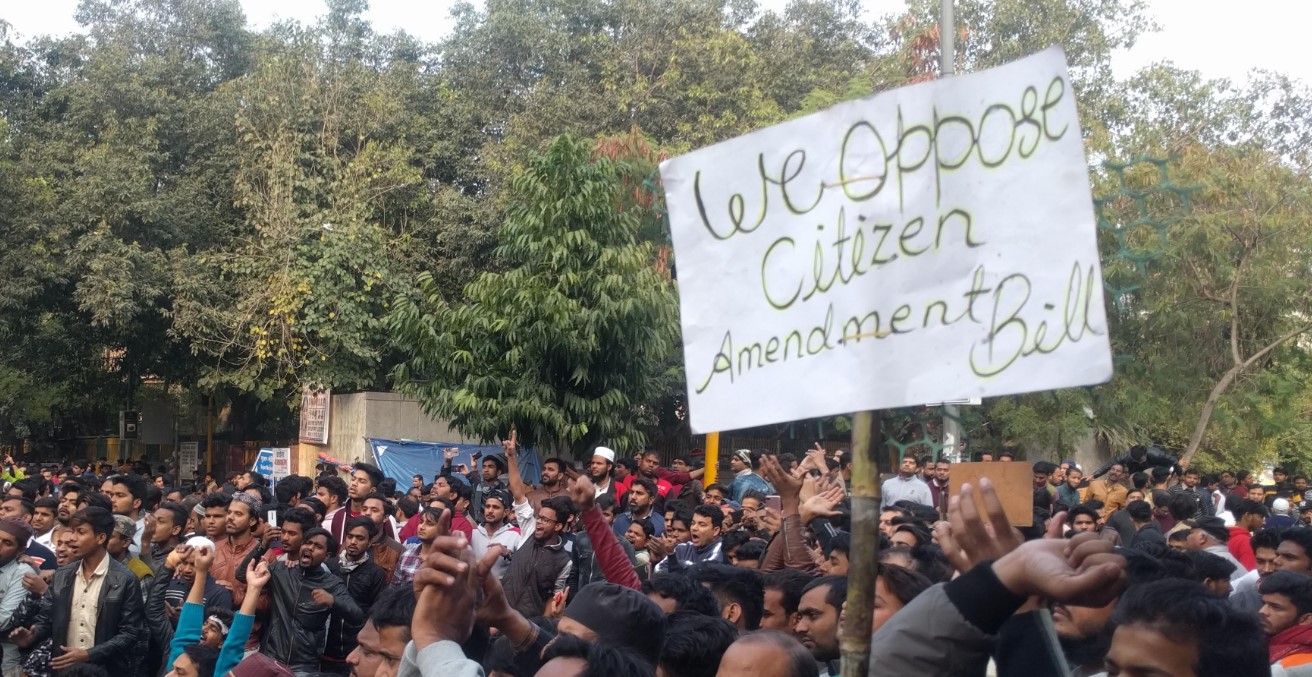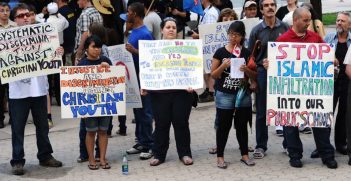India’s Citizenship Amendment Act 2019

Despite the media and mass movements protesting India’s Citizenship Amendment Act, it does not strip any Indian of their citizenship. Rather, it provides refuge to persecuted minorities.
Independent India’s Citizenship Laws can be traced to 1955. The Citizenship Act provided citizenship to those born in India and offered two ways for non-Indians to obtain Indian citizenship: people from the rest of undivided India would become eligible to apply for citizenship after seven years of residency in India, whereas those from countries other than undivided India would become eligible after twelve years of residency in India. The Citizenship Act was amended in 1985 in the aftermath of the Assam movement and then subsequently in 1992, 2003, 2005, and 2015. The 2003 amendment in particular introduced the notion of “illegal immigrants” (defined as those without proper travel documents or those who had overstayed the term of their Indian visas) into the act and made them ineligible to apply for citizenship through registration or naturalisation. These illegal immigrants could be deported and/or jailed. The 2003 amendment also made it mandatory to ultimately compile a National Register of Citizens (NRC) – a move that was then supported by the Congress and Left parties. The latest amendment to the Citizenship Act came into being on 12 December 2019.
What makes this latest amendment stand out is that it for the first time permits people from the Hindu, Sikh, Jain, Jewish, Zoroastrian, and Christian communities, originally from Pakistan, Bangladesh or Afghanistan (PBA), to apply for Indian citizenship if these people had arrived in India before 31 December 2014, i.e., they had been living in India for five years. The act specifically excludes Muslims. The constitutional validity of the act has been challenged in India’s Supreme Court.
Sections of the media (including international media) and some countries have objected to this act. Some people (particularly academics) have initiated signature campaigns against this act. In India, several rallies (some violent) have been held against this act. These rallies have largely been instigated by some political parties and fringe groups. It is not always clear what these groups are agitating for – denial of citizenship to minorities from PBA or award of citizenship to Muslims from PBA. Before passing judgement on the act, it would be necessary to understand its rationale.
In April 1950 the then-Prime Ministers of India and Pakistan (consisting of East and West Pakistan since Bangladesh had not been born then) entered into an agreement to protect minorities in their countries. The Nehru-Liaquat Pact (NLP) enjoined both countries to honour and protect the democratic, political, religious, cultural, and economic rights of their minorities. This pact had become necessary because although the partition of undivided India in 1947 was done along religious lines (it actually carved out the Islamic Republic of Pakistan whereas India opted for secularism), both countries had significant religious minorities. The 1937 and 1945-46 elections in India had been conducted with separate electorates for different communities. The 1937 election did not have the creation of Pakistan as an objective of the Muslim League whereas the 1946 election specifically had this objective. The contrast between the results of the two elections was stark. For example, the Muslim League failed disastrously in the 1937 elections, but in 1946 it won 75 of the 85 Muslim seats in Punjab.
In contrast, the Congress Party (mostly representing Hindus) won 58.23 percent of the total seats and 91 percent of the non-Muslim, vote whereas the Muslim League won 26.81 percent of the total seats. It captured all Muslim constituencies in the central assembly as well as most of the Muslim constituencies in the provincial legislatures. More than anything else, this vote led to the formation of Pakistan. But this could not obfuscate the fact that significant sections of the population in areas now in Pakistan voted for the Congress and significant sections of the population now in India voted for the Muslim League. In the mayhem and carnage of the partition, not all Indian Muslims migrated to Pakistan, nor did all Hindus and Sikhs in Pakistan migrate to India. Using comparable census data from India and Pakistan, the proportion of the population with Indian religious (INR) persuasions (Hindu, Sikhs, Jains and Buddhists) was 84.4 percent in 1941, 87.2 percent in 1951 (immediately after the partition) and 85 percent in 1991. The share of Muslims in India’s population was 13.3 percent in 1941, 10.4 percent in 1951 and 12.5 percent in 1991. By way of contrast in Bangladesh, 29.6 percent of the population was INR in 1941, falling to 22.8 percent in 1951 and 11.3 percent in 1991. In Pakistan INR population fell from 19.6 percent in 1941 to 1.6 percent in 1991 whereas the share of Muslims rose from 78.8 percent in 1941 to 96.7 percent in 1991(for details see chapter 2 of vol. 1 of Raghbendra Jha, Facets of India’s Economy and Her Society, Palgrave Macmillan, 2018). These disparities have grown further since 1991. The share of Muslims in India’s population was 13.4 percent in the 2001 Census and 14.2 percent in the 2011 census. Comparable figures are not readily available for Pakistan and Bangladesh.
This factual narration lays out the gross violation of the NLP by Pakistan and Bangladesh. In Pakistan in particular, the media has reported large scale kidnappings, conversions, and forced marriages of young women. In India, the Muslim population has grown steadily and its mean per-capita expenditure is not very different from that of the Hindu population (for details see chapter 9 of vol. 2 of Raghbendra Jha, Facets of India’s Economy and Her Society, Palgrave Macmillan). India has had Muslim Presidents, Vice Presidents, Governors, Chief Ministers, Chief Justices of the Supreme Court, and the like. It is very hard to make the accusation of systematic discrimination against Muslims in India stick.
By way of contrast, members of the minority community are facing dire conditions in PBA. They fear for their safety, dignity, and livelihood and, except for small pockets, are not economically prosperous. Their forefathers did not participate in India’s freedom struggle for their progeny to end up in such hardship. Major leaders of India including Mahatma Gandhi had promised to give these people Indian citizenship should they ever choose to move to India. Some of these minority groups have fled to India, given that India has had a long history of providing refuge to persecuted minorities (Chapter 9 of vol. 2 of Raghbendra Jha, Facets of India’s Economy and Her Society, Palgrave Macmillan, 2018).
The CAA does not take away any Indian’s citizenship. On the other hand, it provides refuge to persecuted minorities. This should be seen as a humane gesture. With a population of 1.3 billion, India does not have the capacity to absorb other persecuted groups. In any case, there are many other Muslim countries where persecuted Muslims from other counties could go. The path to Indian citizenship is open to Muslims from any country, including PBA.
Finally, the act needs to be seen as positive discrimination much like the affirmative action policy of the US and the reservations for Scheduled Castes and Tribes (SC/ST) in India. Those who are agitating against the Indian CAA should perhaps pay heed to how much SC/ST and other deprived groups have benefited from such positive discrimination.
Professor Raghbendra Jha is with the Arndt-Corden Department of Economics, College of Asia and the Pacific, Australian National University.
This article is published under a Creative Commons Licence and may be republished with attribution.





